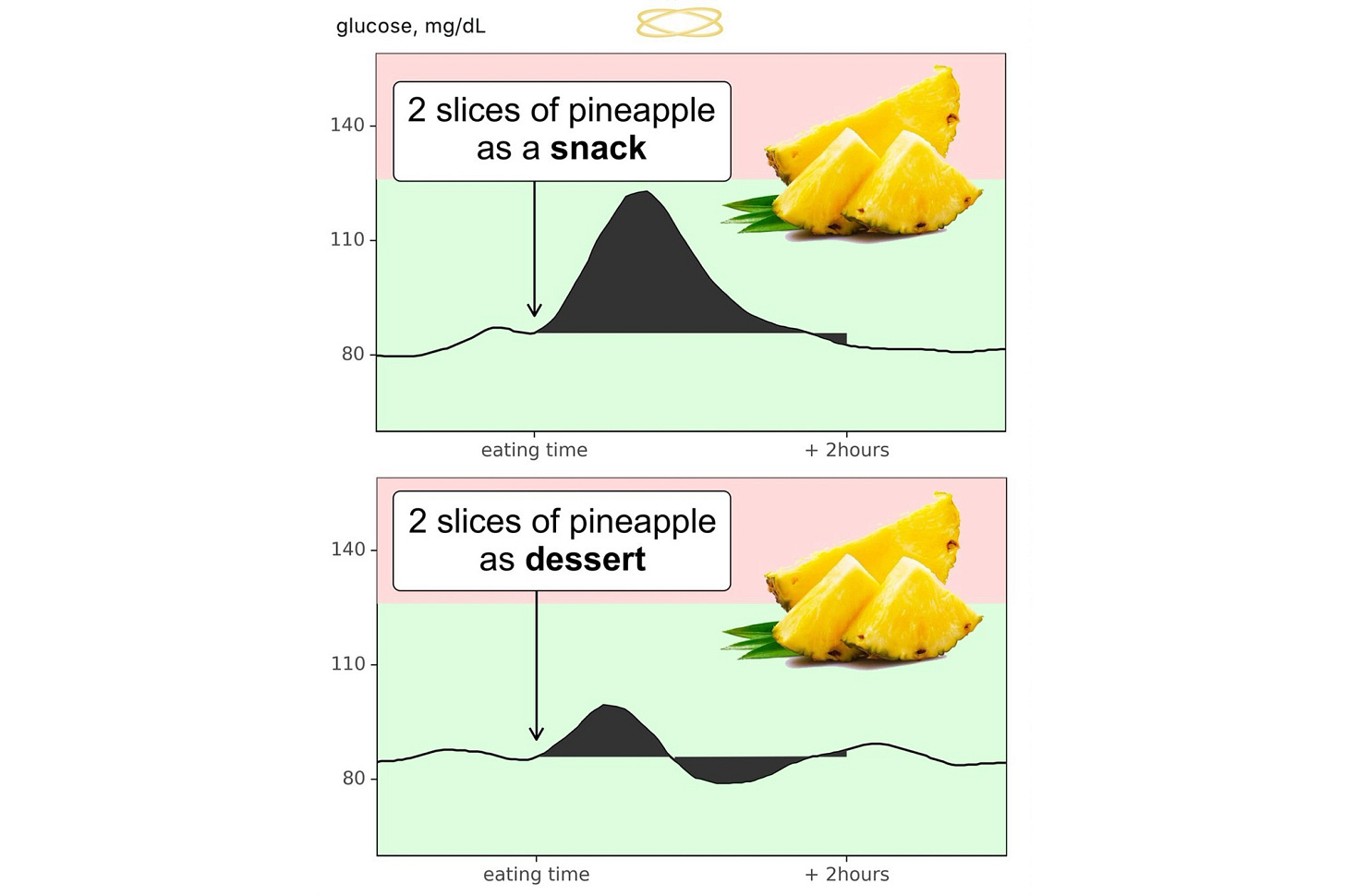If you’re anything like me you have a long list of nonfiction books you feel like you *should* read. I confess that nonfiction usually feels like homework to me — I’ll pick fiction any day. I recently read Jessie Inchauspé’s Glucose Revolution after following her on Instagram for some time @glucosegoddess . I think Inchauspé is brilliant and I highly recommend her book! She also has a new book out with a meal plan called The Glucose Goddess Method. I’m going to give the TLDR (too long didn’t read) version below because I found it so interesting and useful.
I am a big believer in balancing blood sugar, and have been since I realized that my adolescent hypoglycemia could be solved. I had to carry around a Kudo’s bar in every pocket (and then a Luna bar, etc.) in case of a weak spell on the tennis court. As much as your girl loves a snack, needing to eat every couple of hours got annoying! I was also diagnosed with PCOS, a fairly common female disorder where you develop cysts on your ovaries. People are often told they have PCOS when their periods are irregular or they have other signs of hormonal imbalance without proof of cysts, and insulin resistance is a major issue that often goes hand in hand with it. In my personal experience, taking cinnamon capsules to help with blood sugar balance and working on my diet made my hormones much more balanced
I am oversimplifying because I am not in fact a scientist (the last science class I took was about natural disasters, and it was in Spanish. Terremotos!), but the gist of insulin resistance is that your body does not respond properly to insulin to absorb glucose from your blood so it makes more insulin. Insulin resistance is a major component of Type 2 Diabetes as well. Obviously, I’m not a doctor, so you should speak to your doctor. However, Inchauspé gives case studies of diabetics in the book who drastically decreased how much insulin they needed by lowering their glucose curves.
Inchauspé is a French biochemist who posits that large peaks and valleys in blood sugar effect most people (she estimates nearly 90%) and can be factors in not just diabetes and weight gain but also mental health issues, skin issues, and anything related to inflammation — including cancer. She had a serious accident, and years later she still deals with dissociative episodes. She has discovered through monitoring her own blood sugar that a big glucose curve corresponds to many of these episodes. These are big claims, but I find her evidence deeply compelling.
Something I find exciting about her method is that relatively easy hacks can make a huge difference, without cutting out your favorite foods.
The main goal is to keep your glucose levels relatively stable after eating. In her parlance, this is called “flattening your curves.” This glucose level stability can in turn stabilize your energy, weight, and moods.
The Rules:
Eat vegetables first
She says to eat a vegetable or salad before your entree, which most cultures tend to do. Not groundbreaking! However, I’m pretty shocked by the difference in her graphs i.e. the below deconstructed sandwich, and have been trying to follow her advice instead of eating all my food mixed together.
‘Dress’ your carbs
She also describes this as ‘adding clothes’ to your carbs with a protein or fat. Cutesy language aside, it means that you shouldn’t eat plan carbs. It can make a huge difference to eat your apple with nut butter, your cake with whole fat yogurt, or your coffee with cream. If I’m having rice as a side, I always make sure to add olive oil. It’s delicious, and it also keeps me full because my blood sugar isn’t going crazy.
Have vinegar before a starchy/ sugary meal
I think this one is super easy, and you can also have it right afterwards if you forget. Putting a tablespoon of vinegar in water — she recommends apple cider vinegar — helps slow down the release of glucose into your bloodstream and helps your muscles turn it into glycogen. I’ve started doing this before dinner when I remember, and I think it’s an especially good hack if you’re about to eat a bunch of sugar or starch.
Walk after meals
Taking a 10-20 minute walk after meals can really help the glucose curve and help if you normally are super sleepy after lunch (me!). I’m going to try it.
Eat sugar (including fruit) last
A heartbreaking discovery for me has been that my morning smoothies might not my best pick. I love them. I even add protein and fat to them, which is one of her suggestions! However, she is a big believer that your breakfast sets up your blood sugar for the day, and you don’t want a big glucose spike even if it’s from a ‘good’ sugar like fruit. I’ve realized that on days I have my paleo matcha granola or eggs I’m less hangry when it is time for lunch, and I actually seem to be in a better mood ALL DAY.
This also means it’s a lot better to eat dessert after a meal instead of on its own as a snack. Doable!
I personally think her most vital advice is to prioritize a breakfast that keeps your blood sugar level with mostly protein, fat, and/or vegetables.
I know this is a lot of information! Please let me know if you try any of these tips and how they make you feel.
xo, Alex






